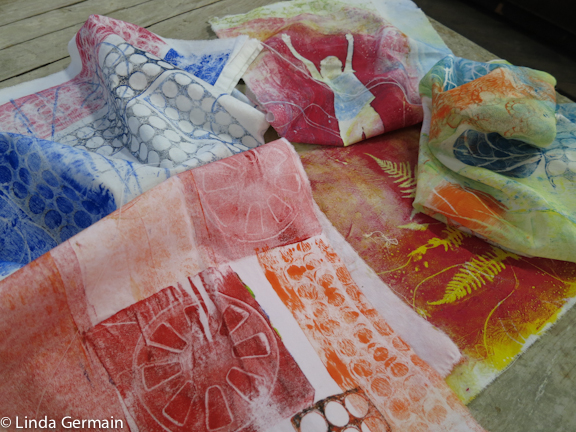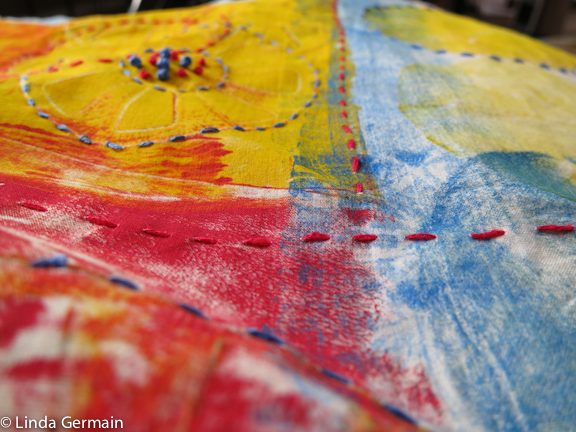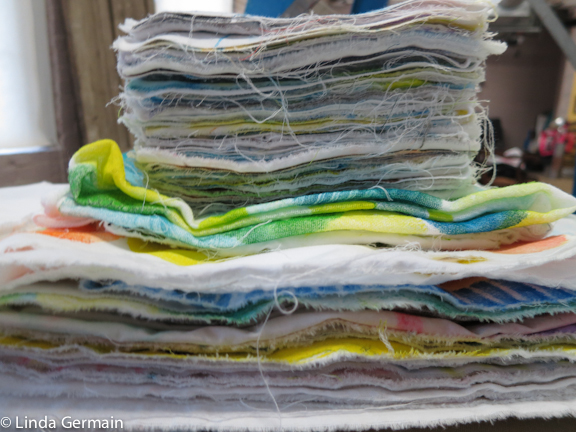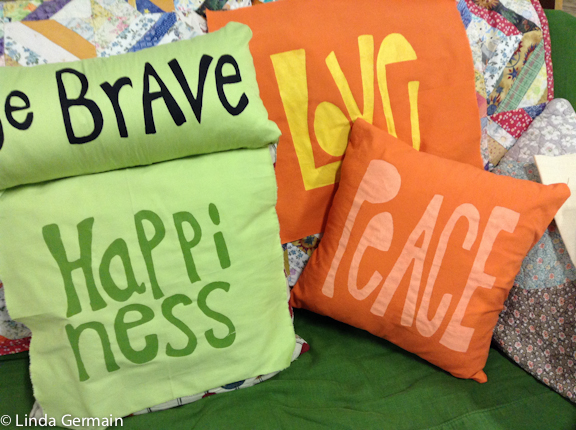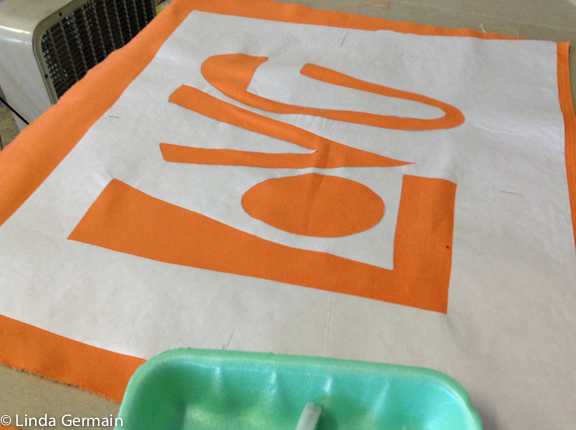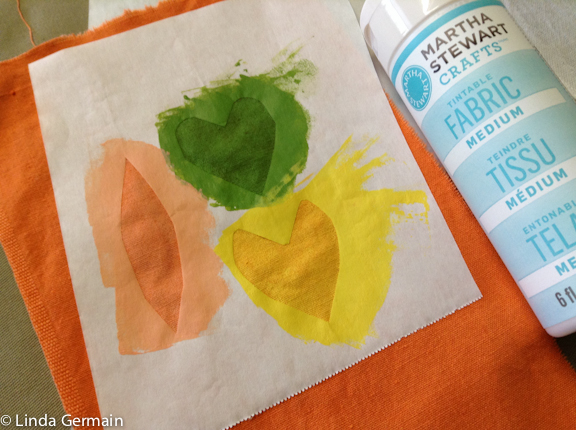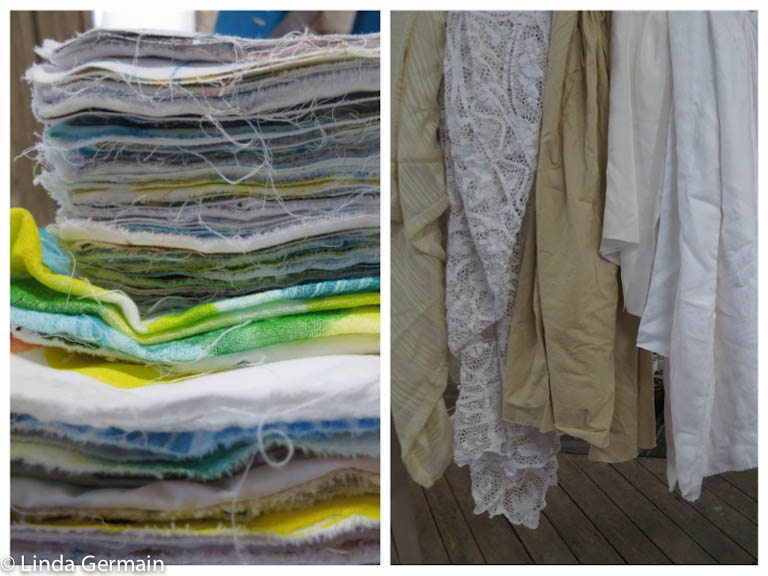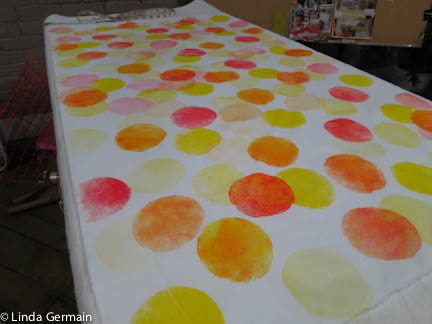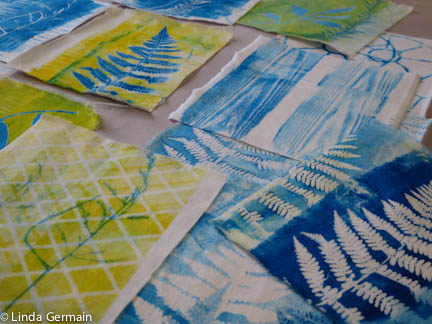Why play with printing on fabric?
Play and guided discovery is how new things are invented. If you follow all the rules, then it is hard to create something new.
That is why I love gelatin printmaking.
With just a few tools and a pile of recycled fabric I can explore imagery, layering, composition and mark making with immediate feedback.
- This immediate result allows for active learning and adjustment.
- I don’t have to wait for things to develop like with some dyeing processes.
- I don’t have to spend hours planning and carving one design like with block printing.
- I don’t need the planning and set up of screen printing.
My most favorite tools are found object stencils, grasses, threads and feathers. I can combine these with a few other marks and have hours of printmaking fun.
I like to use 100 percent cotton sheets, the old ones that you can find at a boutique thirft store. This makes the materials less precious and creates a freedom to explore. I can print with abandon, and if the layering idea did not work, then no loss. It was not a precious, expensive piece of fabric.
I like the exploration so much that I have piles of fabric prints that could be transformed into a finished product. Seven project ideas for monoprints on fabric:
- Stitch, mat and frame
- Stitch, piece and cover a journal
- Trim and make into and iron on patch for a tote bag
- Cut and quilt into coasters
- Rip and wrap into fabric balls
- Crop and combine into pillow covers
- Sew and quilt into table runners
What about you? Do you have fiber projects that would be transformed by using one of a kind monoprinted fabrics of your own making?
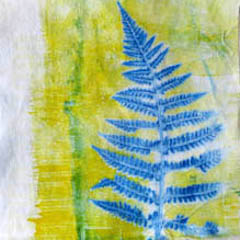
Monoprinting on Fabric - online printmaking course
- Make & modify the glycerin and gelatin plate
- Make the most of your marks on fabric
- Capture the details with mere hand pressure
- Create one of a kind fabrics
Additionally, you will receive a weekly email about printmaking, ideas, tips and courses.
Join us today and start having fun!
Why play with printing on fabric? Read More »
